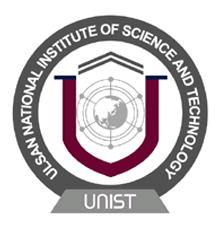Team:UNIST Korea
From 2011.igem.org
| Line 1: | Line 1: | ||
| - | + | {| style="color:#1b2c8a;background-color:black;" cellpadding="3" cellspacing="1" border="1" bordercolor="#fff" width="62%" align="center" | |
| + | !align="center"|[[Team:UNIST_Korea|Home]] | ||
| + | !align="center"|[[Team:UNIST_Korea/Team|Team]] | ||
| + | !align="center"|[https://igem.org/Team.cgi?year=2011&team_name=UNIST_Korea Official Team Profile] | ||
| + | !align="center"|[[Team:UNIST_Korea/Project|Project]] | ||
| + | !align="center"|[[Team:UNIST_Korea/Parts|Parts Submitted to the Registry]] | ||
| + | !align="center"|[[Team:UNIST_Korea/Modeling|Modeling]] | ||
| + | !align="center"|[[Team:UNIST_Korea/Notebook|Notebook]] | ||
| + | !align="center"|[[Team:UNIST_Korea/Safety|Safety]] | ||
| + | !align="center"|[[Team:UNIST_Korea/Attributions|Attributions]] | ||
| + | |} | ||
| - | + | {|align="centre" | |
| - | + | | '''SELF LESS GMOs'''. | |
| - | + | ||
| - | + | ||
| - | + | ||
| - | + | ||
| - | + | ||
| - | + | ||
| - | + | ||
| - | + | ||
| - | + | ||
| - | + | ||
| - | + | ||
| - | + | ||
| - | + | ||
| - | + | ||
| - | + | ||
| - | + | ||
| - | {|align=" | + | |
| - | | | + | |
|[[Image:UNIST_Korea_logo.png|200px|right|frame]] | |[[Image:UNIST_Korea_logo.png|200px|right|frame]] | ||
|- | |- | ||
| | | | ||
| - | + | Genetically Modified Organisms (GMOs) pose a significant threat to human health and the environment. Despite being a promising candidate in various processes such as production of drugs and bio-commodities, GMOs do not experience a warm welcome from the human society. Fear of destruction of the natural biota suppresses all of the benefits offered by GMOs. Horizontal gene transfer (HGT) from GMOs to some pathogenic microbes, which leads to superbugs, is yet another major concern with GMOs. Here, we design a GMO with a built-in triggered-suicide system that is inducible by environmental signals (such as light, oxygen, heavy metals or quorum sensing system). This selfless GMO would kill itself on receiving environmental cues when it is released from its native completely closed system (fermentor or laboratory) to the open system (surrounding environment). We propose the use of a novel suicide platform using the genes coding for the restriction enzyme, DpnI that would chew up all methylated DNAs. This novel suicide platform may help prevent HGT and in turn enhance the potential benefits offered by GMOs.'' | |
|[[Image:UNIST_Korea_team.png|right|frame|Your team picture]] | |[[Image:UNIST_Korea_team.png|right|frame|Your team picture]] | ||
|- | |- | ||
| Line 32: | Line 24: | ||
<!--- The Mission, Experiments ---> | <!--- The Mission, Experiments ---> | ||
| - | |||
| - | |||
| - | |||
| - | |||
| - | |||
| - | |||
| - | |||
| - | |||
| - | |||
| - | |||
| - | |||
| - | |||
Revision as of 15:47, 14 July 2011
| Home | Team | Official Team Profile | Project | Parts Submitted to the Registry | Modeling | Notebook | Safety | Attributions |
|---|
| SELF LESS GMOs. | |
|
Genetically Modified Organisms (GMOs) pose a significant threat to human health and the environment. Despite being a promising candidate in various processes such as production of drugs and bio-commodities, GMOs do not experience a warm welcome from the human society. Fear of destruction of the natural biota suppresses all of the benefits offered by GMOs. Horizontal gene transfer (HGT) from GMOs to some pathogenic microbes, which leads to superbugs, is yet another major concern with GMOs. Here, we design a GMO with a built-in triggered-suicide system that is inducible by environmental signals (such as light, oxygen, heavy metals or quorum sensing system). This selfless GMO would kill itself on receiving environmental cues when it is released from its native completely closed system (fermentor or laboratory) to the open system (surrounding environment). We propose the use of a novel suicide platform using the genes coding for the restriction enzyme, DpnI that would chew up all methylated DNAs. This novel suicide platform may help prevent HGT and in turn enhance the potential benefits offered by GMOs. | File:UNIST Korea team.png Your team picture |
| Team Example |
 "
"
